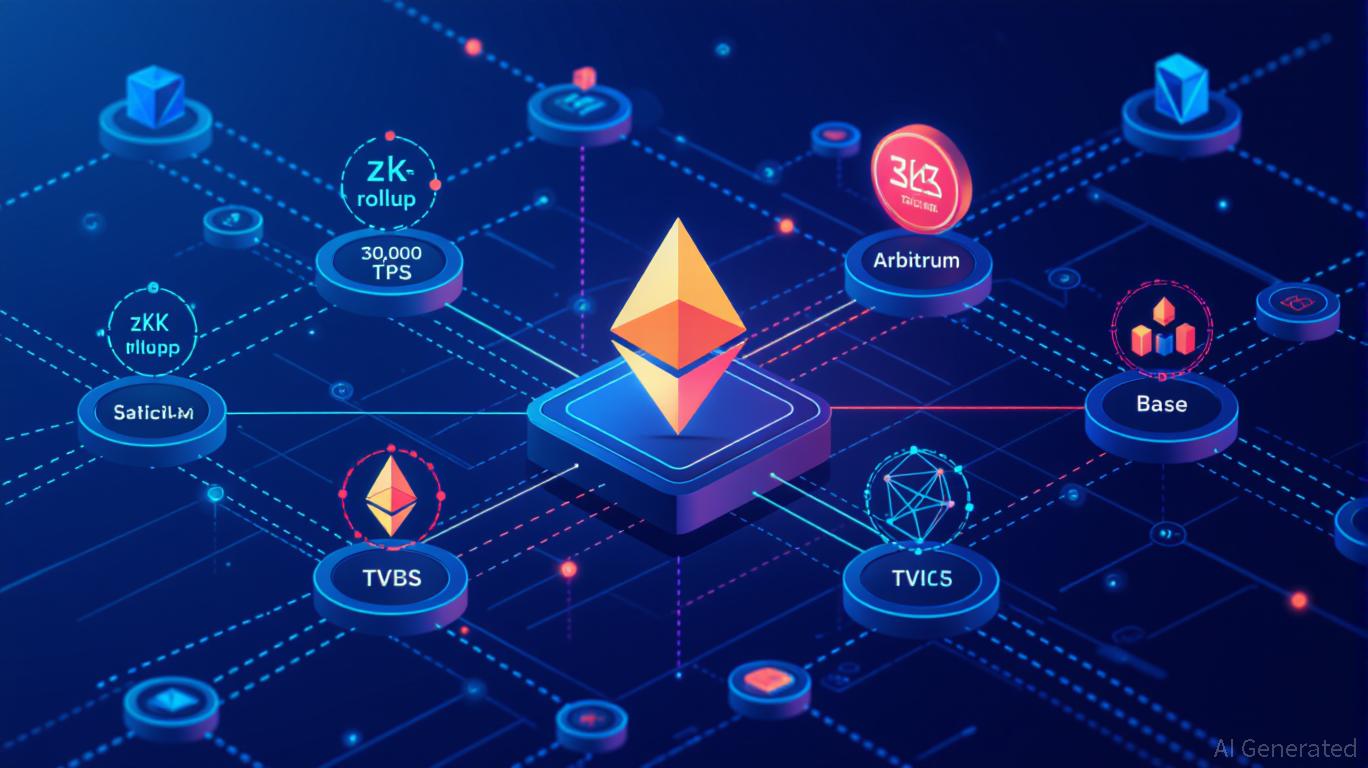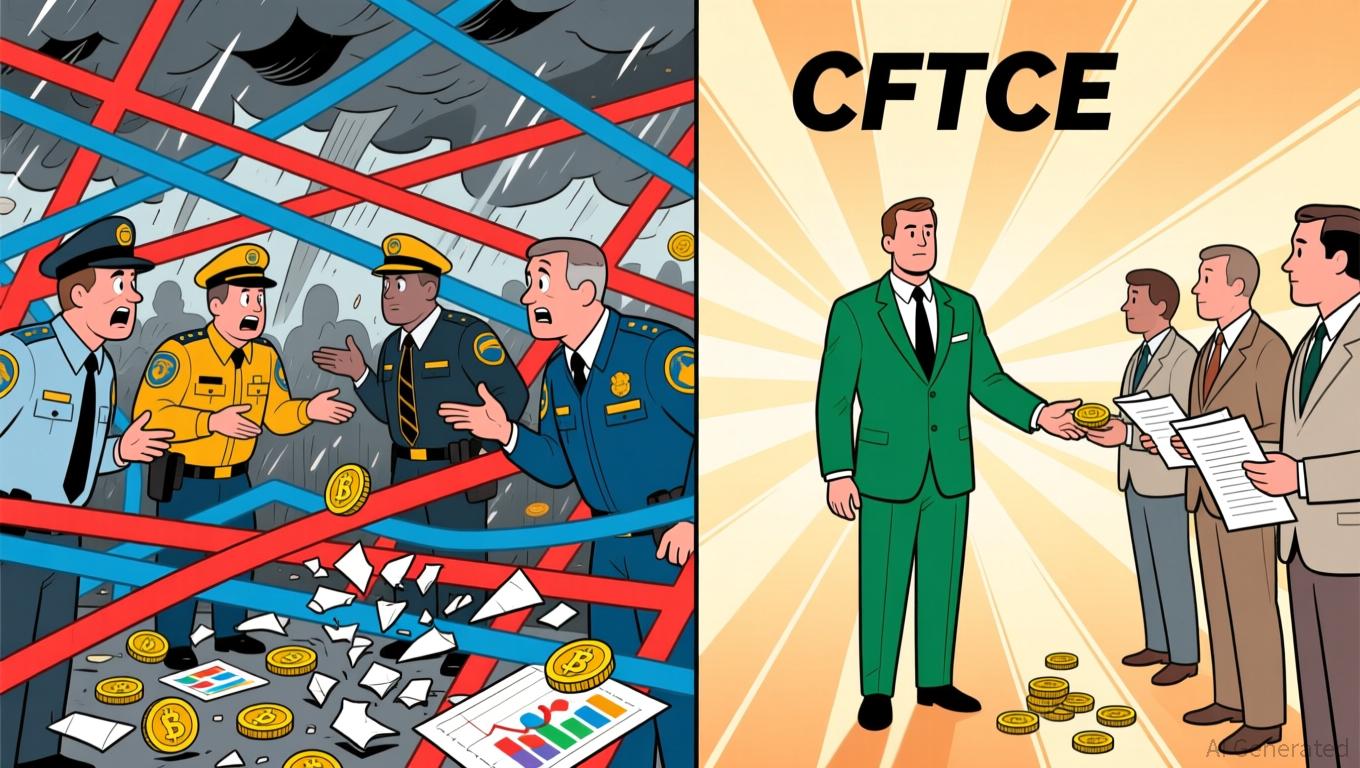Vitalik Buterin Supports zkSync and Shares Insights on the Evolution of Scalable Ethereum Solutions
- Vitalik Buterin endorsed zkSync as Ethereum's key scalability solution, praising its ZK-rollups for security and 30,000 TPS capacity post-Atlas upgrade. - The endorsement drove ZK token's 120% surge to $0.74, attracting 30+ institutions evaluating zkSync's enterprise-focused Prividium. - zkSync faces competition from Arbitrum ($16B TVL) and Base (Coinbase-backed), but gains traction via institutional partnerships and privacy-centric design. - Investors must balance zkSync's technical innovation with Arbi
Buterin’s Support: Driving zkSync’s Growth
Buterin’s endorsement of zkSync reflects his confidence in zero-knowledge (ZK) rollups as the best route for Ethereum’s expansion. In a widely referenced remark, he called zkSync’s impact “undervalued and significant,” stressing its ability to process transactions off-chain while safeguarding the Ethereum mainnet’s security,
Buterin’s influence was not just in words. After his endorsement, zkSync’s native token (ZK) jumped 120% to $0.74 in just two days, pushing its market value close to $600 million—a level not reached since May 2025,
Technical Comparison: zkSync and Its Rivals
Although zkSync has made significant strides, it faces tough competition from optimistic rollup solutions like
Scalability:
zkSync’s ZK-rollups use cryptographic proofs for immediate transaction confirmation, unlike optimistic rollups, which depend on fraud proofs and can cause delays,Coinbureau. With the Atlas upgrade’s 30,000 TPS, zkSync is well-positioned for high-volume applications, though Arbitrum’s established DeFi network and Base’s rapid user growth keep them competitive,RealSatoshiclub.Security:
ZK-rollups naturally offer trustless security, as mathematical proofs validate transactions. In contrast, optimistic rollups rely on external parties to detect fraud, which can introduce risks,Coinbureau. Buterin’s latest suggestion to swap Ethereum’s modexp precompile for standard EVM code further boosts ZK-rollup efficiency, though it results in a 15-25% increase in gas costs,Coinotag.Adoption:
Arbitrum leads in total value locked (TVL), boasting $16 billion within its ecosystem, while Base, backed byCoinbase, has reached $4.94 billion in TVL and holds a 43.5% market share,PowerDrill. zkSync, meanwhile, is narrowing the gap through partnerships with institutions and a focus on privacy-first applications,Yahoo Finance.

Investment Outlook: Weighing Innovation Against Market Forces
The outlook for Layer-2 investments is determined by three main elements: technological progress, ecosystem expansion, and institutional participation.
zkSync’s Tokenomics and Institutional Interest:
zkSync’s updated tokenomics, which directs network income toward token buybacks and burns, has created deflationary pressure and linked ZK’s value to platform activity,Cryptopolitan. This approach, together with the Atlas upgrade’s improved performance, has drawn over $300 million in daily trading volume,Coinotag. Still, critics point out that zkSync’s ecosystem trails Arbitrum’s in terms of developer resources and DeFi integration,RealSatoshiclub.Arbitrum’s Established Network:
Even though Base has taken some market share, Arbitrum’s $16 billion TVL and more than 250 protocols highlight its strong position in DeFi,PowerDrill. Its recent integration with BitcoinOS, which allows cross-chain bridging, further broadens its capabilities,Coindesk. However, its dependence on optimistic rollups could limit its appeal for privacy-focused sectors.Optimism’s Uncertainty:
While Optimism’s Superchain initiative and retroactive public goods funding are notable, the absence of clear post-Buterin data (such as TVL and transaction numbers) makes its investment case less certain,Coinotag. Broader Ethereum expansion, including $1.37 billion in institutional staking, indirectly supports Optimism but does not compensate for its lack of data,Coinotag.
Conclusion: A Multi-Layered Investment Strategy
Vitalik Buterin’s backing has positioned zkSync as a central player in Ethereum’s scaling story, but investors should take a balanced approach. Those seeking advanced technology and strong institutional ties may find zkSync’s ZK-rollup design and Atlas upgrade particularly appealing for the long term. Meanwhile, Arbitrum and Base, with their established TVL and user communities, offer more stable opportunities for benefiting from DeFi’s expansion. Optimism, despite its innovative approach, needs more transparent data to warrant inclusion in a well-rounded portfolio.
As Ethereum’s scaling competition evolves, the protocols that best combine technical excellence with widespread adoption will come out on top. While Buterin’s vision is reflected in zkSync’s progress, the ultimate outcome will be determined by real-world execution rather than endorsements alone.
Disclaimer: The content of this article solely reflects the author's opinion and does not represent the platform in any capacity. This article is not intended to serve as a reference for making investment decisions.
You may also like
Bitcoin News Update: Trump's Pause on China Tariffs Triggers Worker Protests Over Future of U.S. Shipyards
- Trump administration suspends China tariffs on shipbuilding imports, drawing labor union criticism over domestic industry risks and worker refunds. - 175 H-1B visa abuse investigations reveal $15M+ potential refunds, as unions warn of wage suppression and corporate favoritism in trade policies. - Square enables Bitcoin payments for 4M U.S. merchants, advancing crypto adoption while Trump dismisses inflation concerns and vows meatpacking crackdowns.

Bipartisan Legislation Assigns Crypto Regulation to CFTC to Clarify Oversight Uncertainty
- U.S. lawmakers propose shifting crypto regulation from SEC to CFTC via a bipartisan bill, reclassifying most digital assets as commodities. - The draft aims to resolve regulatory ambiguity stifling innovation, building on stalled House CLARITY Act efforts during the 38-day government shutdown. - Market optimism surged as shutdown relief pushed Bitcoin above $105k, with ETF outflows persisting amid anticipation of clearer CFTC-led oversight. - Critics warn of CFTC resource constraints, while proponents hi

Solana News Update: DevvStream Invests in SOL Despite $11.8M Deficit, Shows Strong Confidence in Sustainable Blockchain Prospects
- DevvStream Corp. (DEVS) disclosed holding 12,185 SOL and 22.229 BTC, staking SOL for 6.29% annualized yield amid a $11.8M fiscal 2025 loss. - The company launched a digital asset treasury via BitGo/FRNT Financial, securing $10M liquidity from a $300M convertible note facility. - Plans include a 2026 tokenization platform for carbon credits and Solana staking, aligning with its de-SPAC/Nasdaq listing strategy. - Despite crypto market outflows, DevvStream's staked SOL attracted inflows, contrasting broader